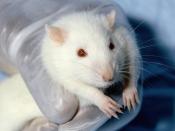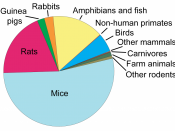Animal testing has always been an important part of scientific and medical advances. Studying the results of just one experiment can provide invaluable breakthroughs leading to cures for patients. If scientists do not experiment on animals, the risky trial runs would have to be conducted on humans. Despite the merits of animal testing though, experimental cats, dogs, and primates face intolerable cruelty inside the laboratory. They have not the means of resisting subjection to the painful and often repeated Frankenstein experiments where scientists injure an animal so that they could test a new drug. Thousands of animals die each year- most of them forced to stay alive many months, limping sickly in their cages while researchers study them before they are put to death. Fortunately though, not all animal case studies resemble torture chambers, and they do not occur as frequently as one may think. To shield the animals from excessive abuse by testing while continuing scientific and medical discoveries' advancement, each animal subject to testing should require a detailed written explanation submitted to and approved by the FDA.
As of now, scientists are free to test new drugs and devices on animals without any approval. Their only responsibility is to make sure that the test subjects are "killed in a humane way promptly after the conclusion of the scientific investigation." It is ironic that the law only protects the animals when they are about to die. Before that, researchers are free to conduct any test they want. Some experiments cripple the animal for many months so the scientists have time to make observations while the animal suffers. In one test, a primate was placed in a guillotine-like device with a blunt "blade" designed to break the animal's neck while keeping it alive to test a spinal-cord repairing procedure. Its...



Good
Hey! It has a very good hook. It has many interesting facts and throughout the whole essay, it kept me wanting to know more. Good job!
1 out of 1 people found this comment useful.